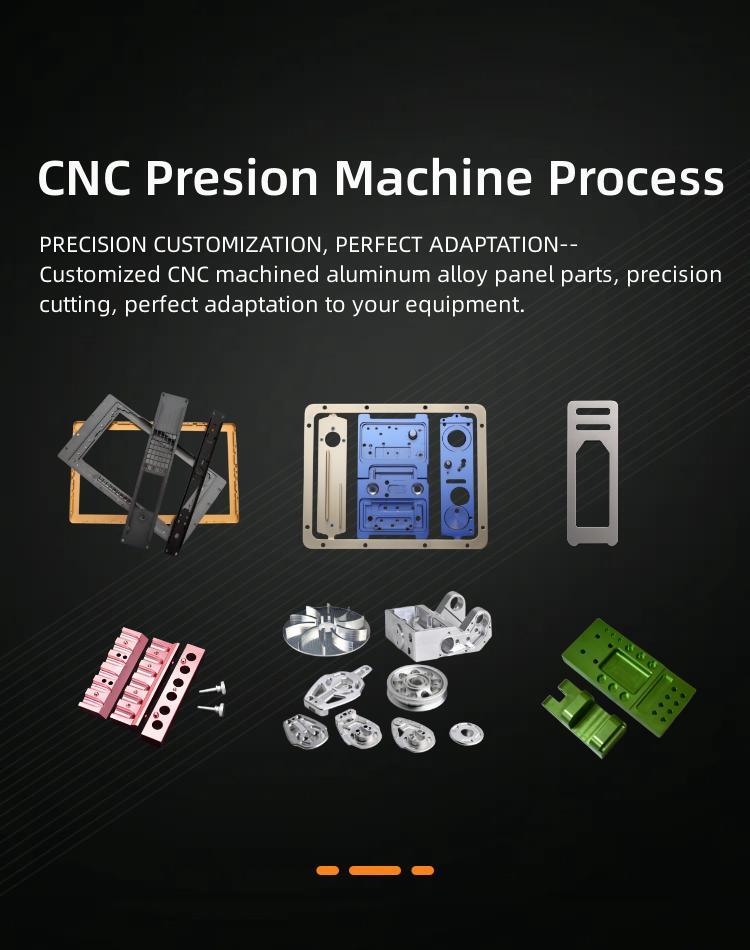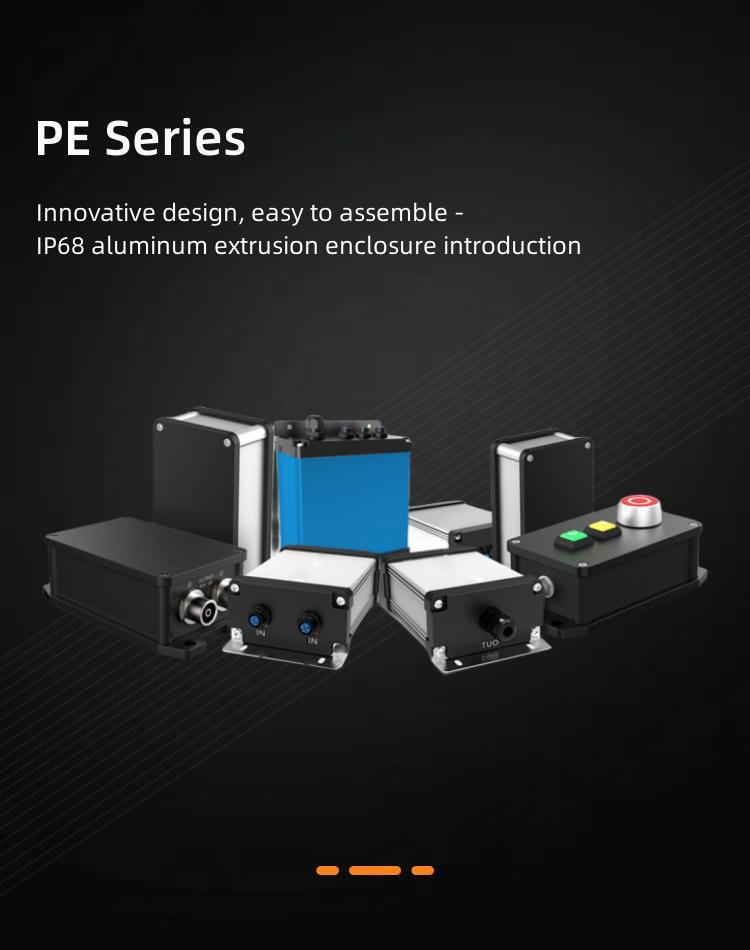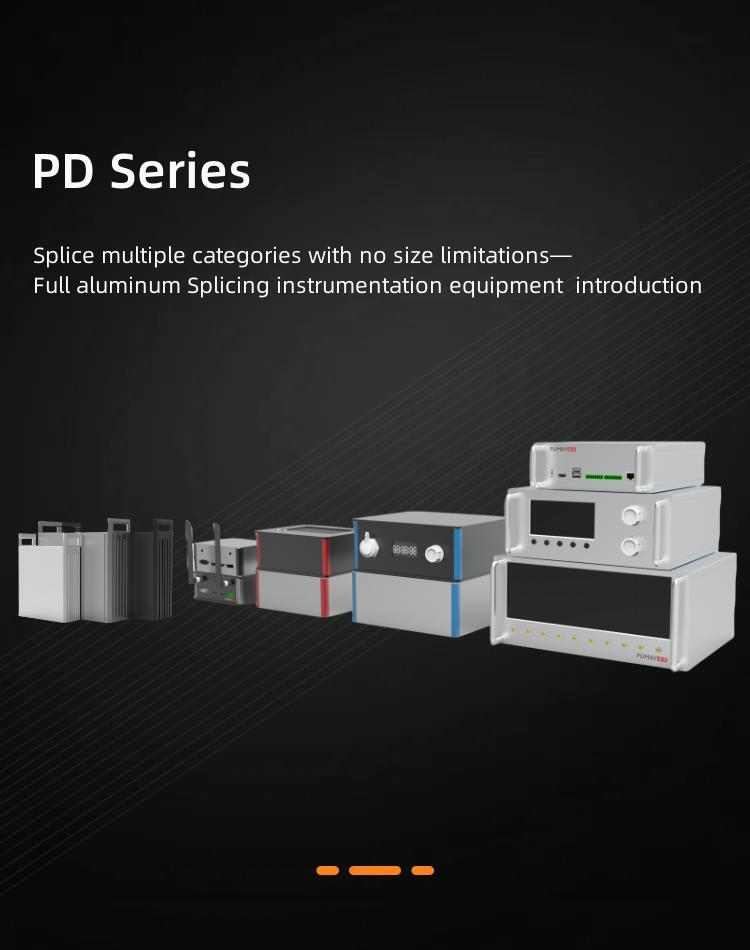The design of aluminum chassis for instrumentation refers to the process of designing the structure, appearance, and function of the chassis required for instrumentation equipment.
First of all, the designer needs to determine the overall size and shape of the chassis according to the size, weight, wiring, and other requirements of the instrumentation equipment. Generally speaking, the instrumentation aluminum chassis needs to have enough space to accommodate the circuit boards, components, etc. inside the equipment, while also considering the chassis' beautiful appearance and ease of carrying.
Secondly, the designer needs to design the internal structure according to the functional requirements and line layout of the instrumentation equipment. This includes determining the frame structure of the chassis, modularized design, multi-layer structure, etc. The frame structure needs to consider the stability and strength of the chassis to protect the internal equipment from external shocks and vibrations. Modularized design can facilitate installation, maintenance and upgrading by connecting different modules through connectors. Multi-layer structures can effectively utilize space, making the internal layout of the chassis more compact and reasonable.
In addition, designers also need to consider the heat dissipation of instrumentation equipment. Since instrumentation equipment generates a lot of heat when working, designers need to design heat sinks and heat sinks in the chassis to increase the heat dissipation area, improve the heat dissipation effect, and maintain the normal working temperature of the equipment.
At the same time, designers also need to consider the chassis sealing protection design. In order to protect the instrumentation equipment from external dust, moisture and other substances, the designer needs to seal the chassis interfaces and openings, the use of sealing tape, gaskets and other ways to prevent the outside world from entering the interior of the chassis.
Finally, designers also need to consider the ease of installation and maintenance of the chassis. Designers can use removable structure, easy to install and maintain. Through bolts, snaps and other connections, the side panels, front panels, rear panels, etc. of the chassis can be quickly disassembled, which is convenient for the installation and maintenance of the internal equipment.
the design of instrumentation aluminum chassis is based on the requirements of instrumentation equipment, to determine the overall size and shape of the chassis, to design the internal structure of the chassis, heat dissipation design, sealing and protection design, and to consider the installation and maintenance convenience of the chassis. Such a design can meet the functional requirements of instrumentation equipment and protect the equipment from external interference and damage.
The design of the instrumentation aluminum chassis needs to consider the following aspects:
1, Size and space: According to the size and requirements of the instrumentation equipment, design the appropriate chassis size and internal space layout to ensure that the equipment can be placed in a complete, and leave enough space for wiring layout and connection.
2, plate thickness: according to the weight and demand of instrumentation equipment, select the appropriate thickness of aluminum plate to ensure the structural stability and load-bearing capacity of the chassis.
3、Structure and connection: Adopt frame structure and assemble aluminum profiles into stable chassis structure by means of connectors and fixing bolts. Reasonable connections are designed to ensure the stability and reliability of the chassis.
4, heat dissipation design: according to the heat dissipation requirements of instrumentation equipment, design suitable heat dissipation structures, such as heat sinks, heat sinks, etc., in order to maintain the normal working temperature of the equipment.
5、Protection performance: Considering the protection performance of the chassis, adopting a sealed design to prevent dust, moisture, and other external substances from entering the interior of the chassis, to protect the equipment from contamination and damage.
6, Installation and maintenance convenience: Design a removable structure, easy to install and maintain. Through bolts, snaps, and other connections, you can quickly remove the side panels, front panels, rear panels, etc. of the chassis, which is convenient for the installation and maintenance of the internal equipment.
7、Marking and interface: Designing marking and interface on the chassis, it is convenient for users to recognize and connect external equipment.
8, Appearance design: According to customer needs and application scenarios, design the appearance of the chassis, so that it is beautiful and generous, in line with the user's aesthetic requirements.
the design of instrumentation aluminum chassis needs to take into account the size and space, material and structure, heat dissipation and protection, installation and maintenance requirements to meet the functionality and use of instrumentation equipment.
The structural characteristics of aluminum chassis for instrumentation mainly include the following aspects:
1, frame structure: aluminum chassis for instrumentation usually adopts a frame structure, which is composed of aluminum profiles. The frame structure is characterized by good stability and high strength, which can effectively protect the internal equipment from external impact and vibration.
2, modular design: in order to facilitate the installation, maintenance and upgrading, instrumentation aluminum chassis is usually modular design, that is, the chassis is divided into a number of independent modules, such as power supply module, control module, display module, etc., the modules are connected through the connector. Such a design can quickly replace or upgrade a module without affecting other parts.
3, multi-layer structure: in order to meet the functional requirements of instrumentation equipment and line layout requirements, instrumentation aluminum chassis usually use multi-layer structure, i.e., the interior of the chassis is divided into multiple levels, each level can be installed on different circuit boards, components and so on. Multi-layer structure can effectively utilize the space, making the internal layout of the chassis more compact and reasonable.
4, heat dissipation design: due to the instrumentation equipment work when the heat generated by the larger, instrumentation aluminum chassis usually take the heat dissipation design, such as heat sinks, heat sinks, etc. This can increase the chassis heat dissipation. This can increase the heat dissipation area of the chassis, improve the heat dissipation effect, to maintain the normal working temperature of the equipment.
5, sealing protection: in order to protect the instrumentation equipment from external dust, moisture and other substances, instrumentation aluminum chassis usually has a sealing protection design. Through the sealing tape, gasket and other ways, the chassis interface and openings for sealing, to prevent the outside world into the chassis.
6, installation and maintenance convenience: instrumentation aluminum chassis is usually designed as a removable structure, easy to install and maintain. The use of bolts, snaps and other connections, can quickly disassemble the chassis side panels, front panels, rear panels, etc., to facilitate the installation and maintenance of the internal equipment.
the structural features of the aluminum chassis for instrumentation mainly include frame structure, modular design, multi-layer structure, heat dissipation design, sealing protection, and ease of installation and maintenance. These features can meet the functional requirements of instrumentation equipment and protect the equipment from external interference and damage.


 The Crucial Role of Aluminum Enclosures in Electronics Projects: A Perspective from Pumay Enclosure
The Crucial Role of Aluminum Enclosures in Electronics Projects: A Perspective from Pumay Enclosure
 Intelligent Aluminum Processing, Efficient Production, Unlimited Creation! -ALuminum CNC Machine Process
Intelligent Aluminum Processing, Efficient Production, Unlimited Creation! -ALuminum CNC Machine Process
 Dive into Excellence with IP68 Aluminum Profile Waterproof Enclosure
Dive into Excellence with IP68 Aluminum Profile Waterproof Enclosure
 Equipment housings, not just appearance! Assembled Aluminum Profile Instrument and Equipment Enclosures
Equipment housings, not just appearance! Assembled Aluminum Profile Instrument and Equipment Enclosures